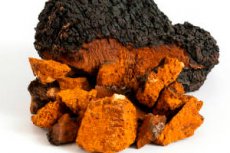
在最近发表在《科学报告》杂志上的一项研究中,研究人员研究了白桦茸提取物对人类口腔癌 HSC-4 细胞的抗肿瘤活性机制。
口腔癌是一个全球性的健康问题,由于其副作用和后遗症,治疗选择有限。主要的治疗方法是手术、放射治疗和化疗,但它们可能会损害健康组织、影响言语功能并降低生活质量。
了解并靶向肿瘤细胞的代谢途径,为开发新型治疗药物提供了可能的途径。白桦茸对多种癌症具有抗癌特性,但其机制尚不清楚。
在这项研究中,研究人员测试了白桦茸是否影响口腔癌的发展和代谢。
用蘑菇提取物治疗后,研究人员研究了细胞存活率、增殖能力、糖酵解途径、细胞凋亡和线粒体呼吸机制。
他们用剂量为 0 μg/ml、160 μg/ml、200 μg/ml、400 μg/ml 和 800.0 μg/ml 的蘑菇提取物处理 HSC-4 细胞一天,以评估其对口腔癌细胞行为的影响,包括细胞周期、增殖、活力、线粒体呼吸、细胞凋亡和糖酵解。
研究小组使用细胞计数试剂盒 8 (CCK-8) 检测法对处理过的细胞进行了细胞周期分析,以确定细胞活力。
为了研究白桦茸对治疗细胞中的肿瘤增殖和存活的抑制作用是否与信号转导和转录激活因子 3 (STAT3) 有关,他们在用 200.0 μg/mL 剂量的提取物治疗后测量了 STAT3 的活性。
此外,他们还利用流式细胞术分析细胞分布,并通过蛋白质印迹法提取总细胞蛋白。
研究人员采用液相色谱串联质谱法 (LC-MS) 来识别白桦茸提取物中具有抗癌特性的成分。
采用光电二极管检测器高效液相色谱法(HPLC-DAD)测定候选化合物的浓度。
他们利用细胞外酸化速率(ECAR)测定法,研究了提取物对处理细胞糖酵解的调控作用。在给予葡萄糖、寡霉素和2-脱氧-D-葡萄糖(2-DG)后,他们实时记录了处理细胞的ECAR测量值。
研究小组检查了一种名为腺苷酸活化蛋白激酶(AMPK)的能量传感器的活性以及细胞耗氧率(OCR)。
他们还评估了慢性能量缺乏对治疗细胞中与细胞凋亡相关的自噬的影响。
他们检查了浓度为 200.0 μg/mL 的白桦茸提取物是否会影响处理细胞中的 p38 丝裂原活化蛋白激酶 (MAPK) 和核因子 κB (NF-κB) 刺激的细胞凋亡。
该提取物通过抑制细胞周期和增殖、降低癌细胞的能量消耗以及通过自噬和细胞凋亡增强细胞死亡来减缓 HSC-4 细胞的生长。
该提取物显著延长了口腔癌细胞的生长期(G0/G1),同时缩短了合成期(S)。Western blot分析显示,该提取物在15分钟后显著降低了磷酸化STAT3的表达,并维持了120分钟。
液相色谱-质谱法(LC-MS)鉴定出三种可能的抗癌化合物:2-羟基-3,4-二甲氧基苯甲酸、丁香酸和原儿茶酸。该提取物可抑制处理细胞中的糖酵解、糖酵解能力和糖酵解储备。
它还能激活AMPK,促进自噬,并抑制处理细胞中的糖酵解途径。提取物诱导自噬后,线粒体基础呼吸速率和三磷酸腺苷(ATP)周转率呈剂量依赖性增加。
然而,除最高提取物浓度外,线粒体最大呼吸速率未观察到显著变化。此外,研究人员观察到线粒体呼吸储备能力随剂量增加而显著下降。
结果表明,白桦茸通过抑制糖酵解介导的持续自噬降低了处理细胞的线粒体膜电位,这意味着线粒体功能障碍会诱导细胞凋亡。
提取物激活NF-κB和p38 MAPK,导致细胞凋亡增加。提取物以剂量依赖性方式增加处理细胞的早期凋亡。
然而,在提取物浓度为0至400 μg/mL的范围内,晚期细胞凋亡并未观察到显著差异。高剂量的白桦茸提取物可能会影响其他细胞生理机能,并降低线粒体的最大呼吸能力。
研究人员发现,白桦茸提取物抑制了 HSC-4 细胞系中的线粒体膜电位和糖酵解活性,从而导致 ATP 水平和自噬降低。
AMPK 激活通过诱导自噬产生效应。STAT3 去磷酸化通过激活 NF-κB 和 p38 MAPK 刺激凋亡途径,从而抑制细胞周期。
多种细胞信号传导机制介导了该提取物的抑制作用。该提取物含有三种抗癌化合物:2-羟基-3,4-二甲氧基苯甲酸、丁香酸和原儿茶酸。
虽然还需要更多的临床前研究来确定该提取物是否能抑制肿瘤生长,但研究结果表明,蘑菇提取物可能是治疗口腔癌患者的潜在辅助治疗剂。

